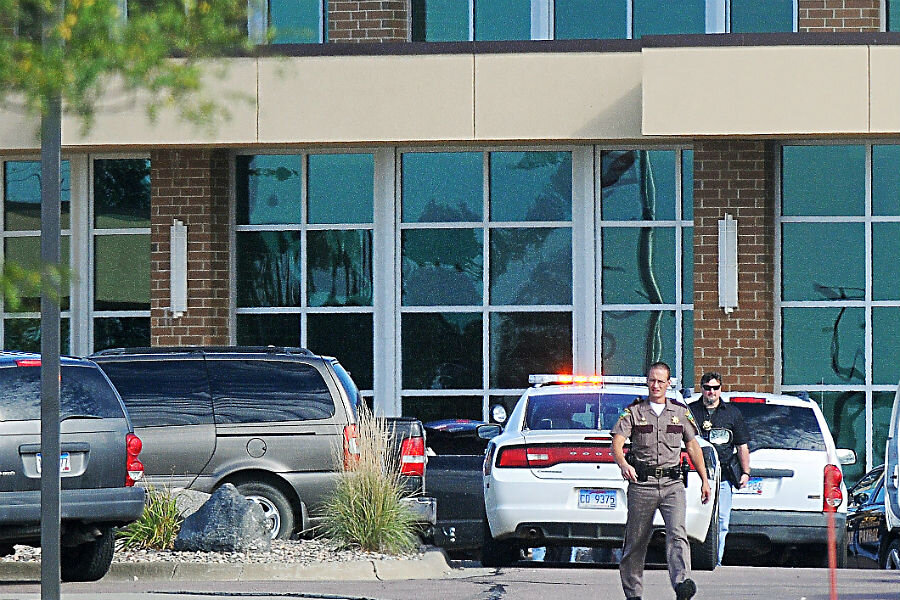Asst. principal tackles shooter in South Dakota school
Loading...
| Harrisburg, S.D.
A shooting at a South Dakota high school that left the principal with a minor injury may have turned out far worse if not for an assistant principal who tackled the student who police say shot the administrator, authorities said Wednesday.
Harrisburg High School Principal Kevin Lein suffered a flesh wound in the arm before Assistant Principal Ryan Rollinger tackled the student and held him down with help from the athletic director, authorities said.
No students were reported hurt in the shooting that occurred around 10 a.m. The high school has about 635 students.
Officers quickly took the student into custody. Lincoln County State's Attorney Tom Wollman declined to confirm the name of the student, but expected charges to be filed within a day.
Authorities said Wednesday afternoon that the student pulled a gun following a dispute with the principal, but said they don't know what spurred the dispute.
Bob Young was the University of Sioux Falls football coach when Mr. Rollinger was a player there in the late 1990s. He told the Sioux Falls Argus Leader:
"I wasn't surprised at all when I heard that Ryan had subdued the shooter," Young said. "That speaks to the kind of courageous character he is."
"It's a scary situation, and knowing the proximity between Ryan's office and the principal's office, it seems there's a chance he might have saved his life."
Harrisburg, about 10 miles south of Sioux Falls, has a population of about 5,000.
Senior Aanna Okerlund, 18, said she was in college algebra when a classmates ran into the room to tell everyone he had seen a student near the principal's office with a gun.
Okerlund said Lein came onto the intercom shortly afterward to tell students there was a school-wide lockdown. She said Lein later told students by intercom that he had been shot, "but was fine."
"You could hear the franticness in his voice," she said. "It's just so surreal."
Okerlund said her classmates were crying and shaking in the corner of the classroom while they waited for news during the lockdown.
Nick Pohlmann, who lives just across the street and has a son who is a senior at the school, said he found out about the shooting through a friend who called him asking if his son was OK. Pohlmann said he immediately drove back to his home and ran over to the school to try to get some information.
"This is good ol' Harrisburg," Pohlmann said. "This doesn't happen here."
In April, Brady Olson and three other staff members reacted the same way when a student fired two shots into the air at North Thurston High School in Lacey, Wash. The teacher tackled a 16-year-old shooter. He said he did what any other U.S. educator would do: He ran toward the gunfire instead of away from it.
"No one, including myself, can prepare for a situation like this, so I'm very thankful that we're all OK. As always, students come first and today was no different," Olson, an Advanced Placement government and civics teacher, said in a statement.
___
Associated Press writers Regina Garcia Cano and Kevin Burbach in Sioux Falls contributed to this report.







